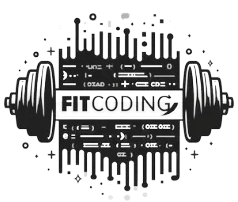Computer vision technology is transforming warehouse operations. Modern cameras and deep learning models that are driven by AI are helping workers make every step of the process faster and less error-prone. They do this by reading signs and keeping an eye on shipping trends. Warehouse systems are smarter and easier for businesses to use than ever before, thanks to improvements in high-resolution cameras and GPUs. This change is not only increasing output, but it is also changing the way people work in warehouses by moving the attention from doing the same things over and over again to tracking and improving the process.
More Than Just OCR
Traditionally, computer vision was used primarily for optical character recognition (OCR), helping machines read labels, addresses, barcodes, and even handwriting. Mounted cameras on conveyors would capture static images, which software would use to sort parcels more accurately. Advanced systems, like those from Prime Vision, now use AI to interpret damaged or obscured package data.
Today, technology is evolving. Enhanced camera resolution and 3D imaging allow for richer data capture. Paired with deep learning models, this data can be processed in real time. This makes it possible to understand the whole scene of a warehouse, not just what’s on the conveyor belt but also how packages move around the whole building.
More advanced models can even sort items into groups, find strange things, and guess when mechanical problems will happen. These features come in handy in places with a lot of people, like eCommerce distribution centers or mail sorting hubs.
Seeing the Bigger Picture
Scene understanding allows warehouse staff to view every touchpoint of a parcel’s journey. Instead of relying on a single scan, systems can cross-reference footage from multiple angles to reconstruct an unreadable label or identify errors early. This kind of processing requires strong infrastructure and expertise, often developed in collaboration with a trusted computer vision software development company.
Warehouse-wide vision systems now allow for real-time tracking of every item on the floor. By integrating camera feeds with facility maps, software can detect delays, congestion, or safety risks, enabling operators to intervene before problems scale. Computer vision, which can see worn robotic grippers and misaligned belts, may aid predictive maintenance.
Key Benefits of Computer Vision in Warehousing
- Increased accuracy in sorting and routing
- Reduced costs from misrouted or damaged goods
- Enhanced worker safety and ergonomic compliance
- Faster identification of inefficiencies
- Improved customer satisfaction through fewer delivery errors.
These kinds of features make it much less necessary for people to do things by hand, which helps cut down on delays and damage, which are two of the most expensive problems in warehouse operations.
A Boost for Manual Sorting Too
One of the most impactful uses of computer vision is in manual operations. In one case, staff had to manually sort items to 40 destinations, leading to frequent errors. A vision-based alert system was implemented to detect misplacements, dramatically lowering the error rate and saving hours spent correcting mistakes.
Another application involved a debris detection system under a large parcel sorter. Previously, staff had to pause the machine for manual inspection. The new system detects issues automatically, improving uptime and reducing maintenance delays.
In partially automated warehouses, robot arms are being tested to load items onto conveyors. A common issue is accidental double-picks. Here, vision software can step in to alert operators or halt the robot, enhancing efficiency. Such solutions are often delivered through collaboration with a software development company that can tailor systems to the warehouse’s infrastructure.
Additionally, warehouse training programs benefit from vision-based feedback. New employees can receive real-time performance evaluations based on how they handle, move, or place items. These systems can accelerate onboarding while maintaining accuracy in high-pressure environments.
Eyes on the Future
While promising, some challenges remain. Warehouses tend to adopt change slowly. Many still run on CPUs due to the costs of upgrading to GPUs. Yet the infrastructure exists today to begin implementing AI-based vision solutions. More companies are exploring hybrid setups, where only the most critical systems are GPU-powered, balancing performance and cost.
Privacy is also a key concern. Systems must focus strictly on objects and workflows, not people. It’s possible to do this with fuzzy images, AI black boxes, or smart camera placement. Additionally, data management measures tailored to health-related activities are necessary to adhere to regulations such as GDPR and HIPAA.
The integration of computer vision with IoT and WMS is another noteworthy development. This trio creates full digital vision by combining object data, camera footage, and operations measures into a single control screen. Operators can not only see what’s going on, but they can also figure out why it’s going on and guess what will happen next.
Conclusion
Computer vision and custom software solutions can help companies that want to change their processes to be more digital. They can make things more efficient and give them more control. Robots that pick up and put down items and machines that look for damage are changing how factories think, move, and grow.
Manufacturers of technology, AI developers, and application experts will need to work together to shape the future of smart transportation as its use continues to grow. Computer vision isn’t just making warehouses better; it’s also building the groundwork for smarter supply lines in the future.











